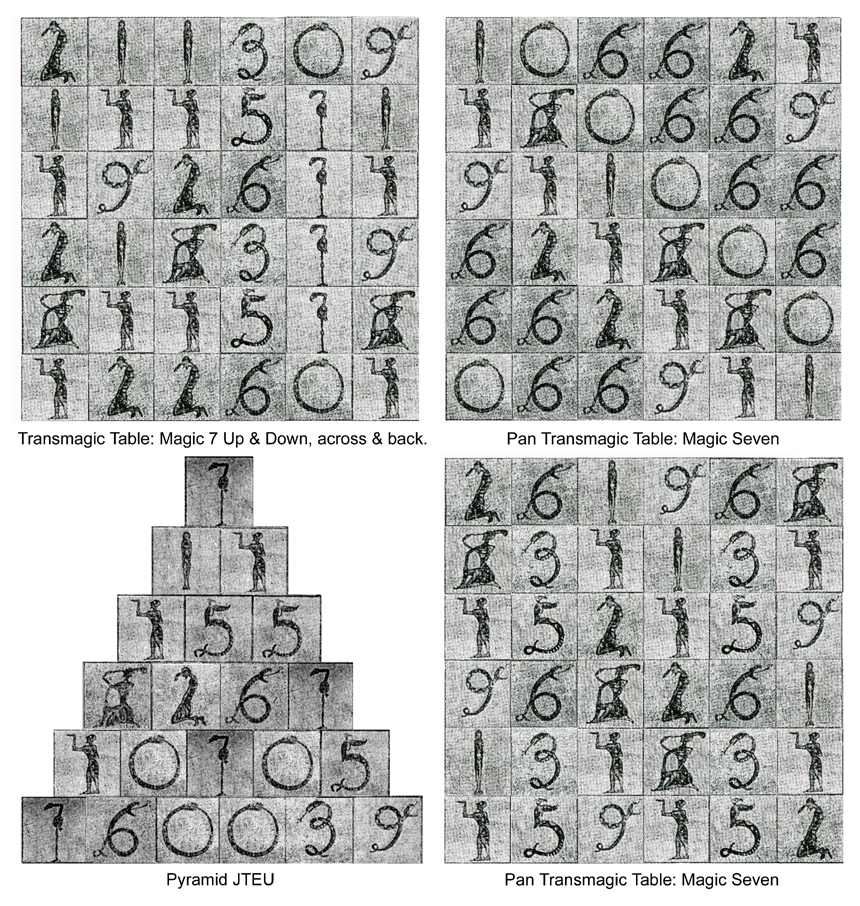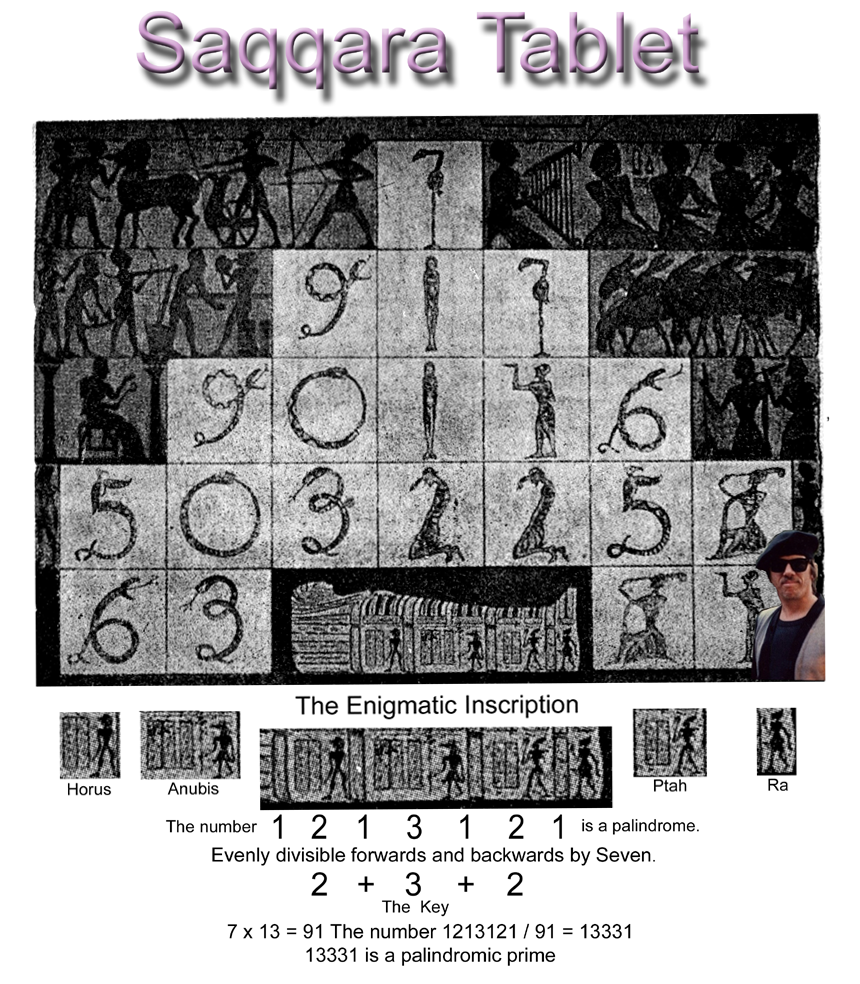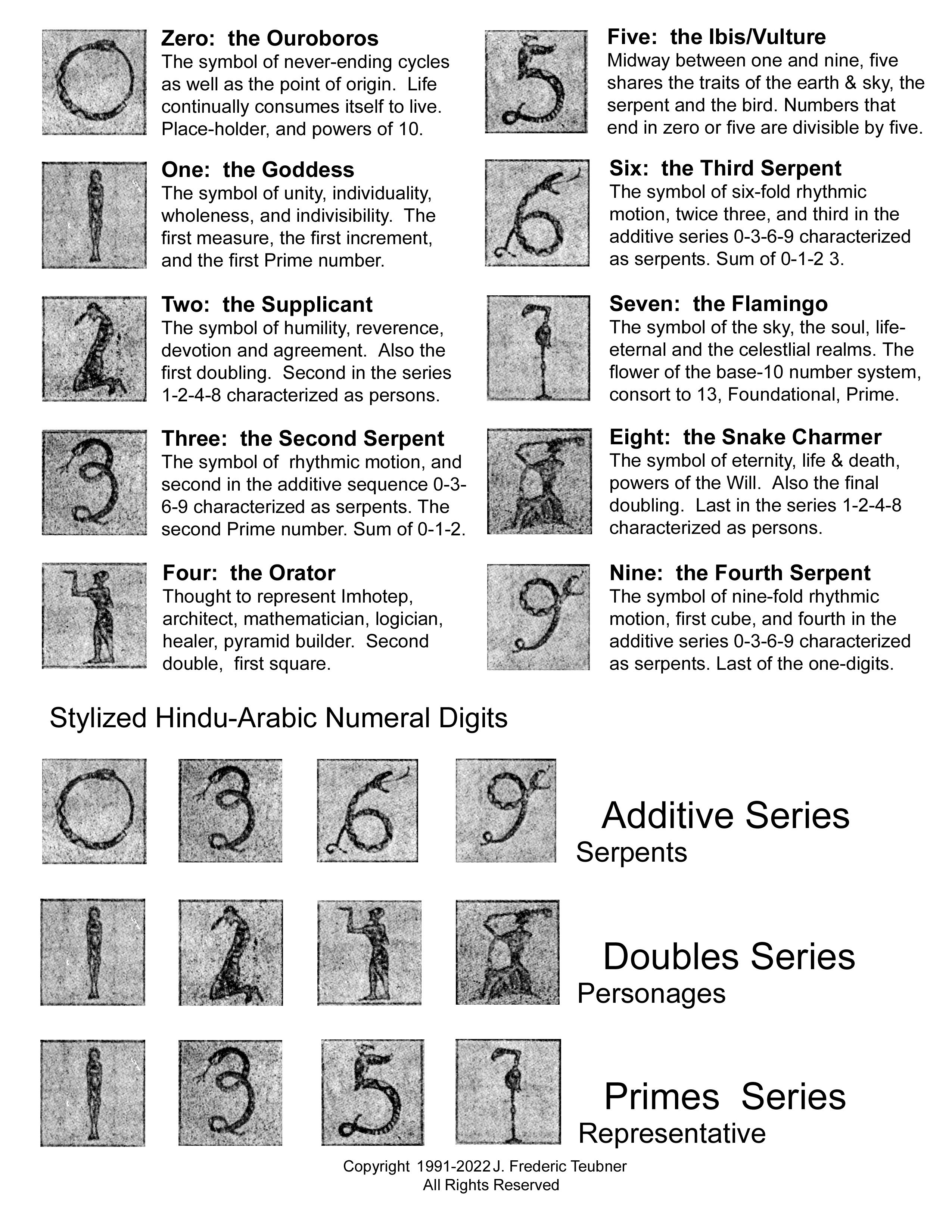Page 4 Secret of Zozer JTEUcosmos
The Secret of Zoser
There is no evidence that
this puzzle has anything to do with Imhotep, Zoser, or the third
dynasty of Ancient Egypt.
All that we have is a puzzle by name, a
picture in a book, and an anecdotal account of the artifact being found
in the ruins of the step-pyramid at Saqqara and being purchased and
analyzed by well-known Egyptologist/mathematician Dr.
S. Kirederf in Cairo around
1920. Said to be exquisitely fashioned from red granite and black onyx
inlaid with white alabaster it is not something likely to be hoaxed
particularly given the sophisticated level of the mathematics involved.
Many
attempts to locate the artifact or even a written record
of its existence have produced nothing. No artwork, inscription,
or artifact researched so far has been even similar as regards the
mural contents and most amazingly of all, the very stylized
Hindu-Arabic numerals associated with the Base-10 positional number
system. A system that first appeared in our current historical record
around 800 A.D. and the concept of Zero only much later. There
are also many other curious contradictions and inconsistencies
regarding the given time-frame. Such as the presence of a horse and
chariot, historically thought to have been brought to Egypt by the
Hyksos Warriors around 1600 B.C. There is also a recurved
long-bow and an unbraced harp, a sickle, a loom, and a churn. There
also seems to be a mixture of motifs, largely Egyptian
references, but also Greek, and possibly Indian and/or Persian
influences. Taken together with what is known of the period the
evidence points to Alexander and the Ptolemies (300 B.C.) and was most
likely produced during
that era as a mythic depiction of what was even for them the distant
past, the Kingdom of Zoser at Saqqara, with its legendary
archetypes, heroes, high mathematics, and state-of-the-art technology
while apparently allowing
for a good deal of intellectual and artistic license. An alternative to
such conjecture
is that it was a tribute made by artisans from another country such as
Phoenicia, Minoa, Babylon, or elsewhere which might explain the unusual
style. On the other hand it might be an authentic relic from Saqqara
which would make it much, much, older. What is depicted is an idealized
kingdom complete with a
formidable well equipped defense, marvelous arts, music, story telling
and dance, along with a work-force of domesticated humans and a
work-force of domesticated animals. The uncrowned King is seated
in the West between Lotus Pillars, he holds the rod and flail of
the Pharaoh, one the symbol of benevolent guidance and the other
the symbol of decisive force. Facing him are his General, most
likely the Prince, and his Heirophant who holds the Ma'ab. Powering and
sustaining the
Kingdom from within the very foundation of the pyramid is the
mumified Ancestor, the Osiris, the Foundation who sleeps forever in his
sarcophagus
beneath the magic preserving spell of numbers. His soul, reverently
represented as the number seven sits atop the pyramid in the form of a
bird about to take flight, specifically a flamingo.
(excerpt from The Architecture of Infinity)


NEXT
Copyright
© 2023 J. Frederic Teubner




